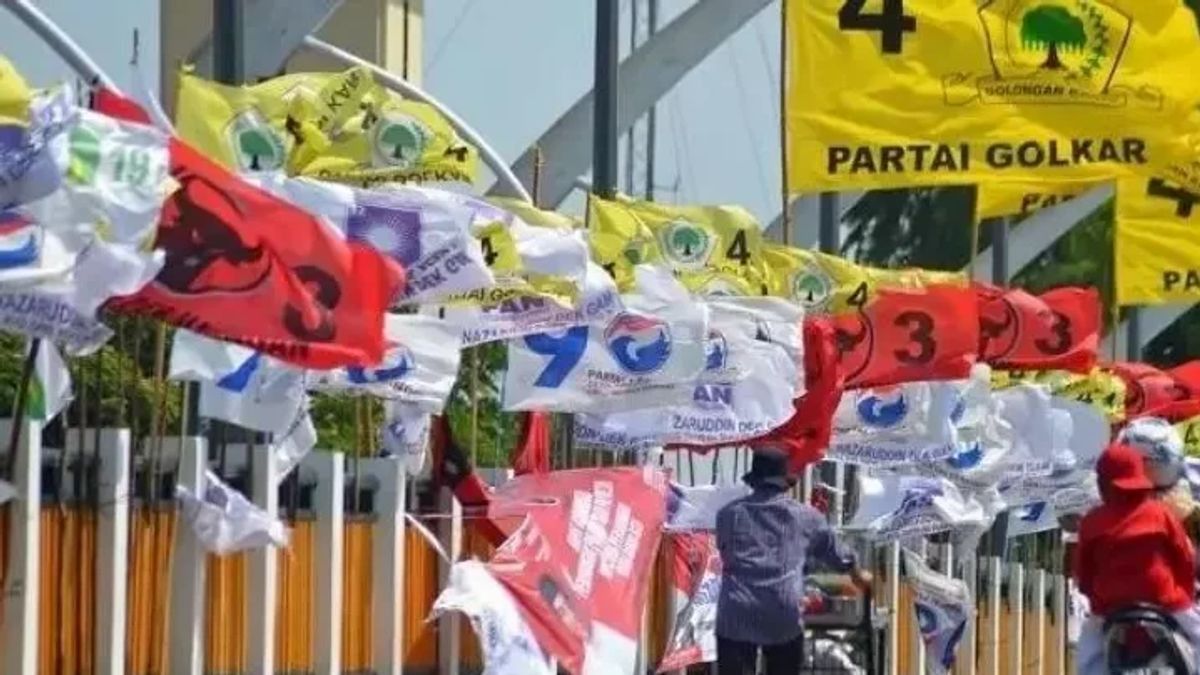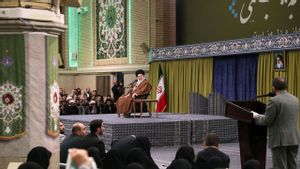JAKARTA - The results of a survey conducted by the Voxpopuli Research Center show that the electability of the Golkar Party has decreased from 8 percent to 7.3 percent by the end of 2022.
"The findings of the Voxpopuli Research Center survey show that Golkar has decreased electability," said Voxpopuli Research Center Communications Director Achmad Subadja in a written statement received in Jakarta, quoted from Antara, Sunday, January 8.
Achmad said that when compared to the previous survey in December 2021, Golkar's electability was stable in the range of 8 percent. However, now it has weakened to 7.3 percent. Meanwhile, the electability trend of the Indonesian Solidarity Party (PSI) continues to rise to 5.5 percent.
"Golkar's electability fell at the turn of 2023, while PSI increased," said Achmad Subadja.
The top position is still occupied by the PDI-P with 18.4 percent electability, followed by Gerindra with 13.5 percent. The two parties, which are both supporting the Joko Widodo-Ma'ruf Amin government coalition, will continue to lead throughout 2022.
In the next place, Golkar and PKB competed fiercely for the top three positions. PKB recorded 8.0 percent electability, shifted Golkar to fourth place, followed by Democrats 5.7 percent, PSI 5.5 percent, and PKS 4.8 percent.
Regarding the coalition that has been formed, Golkar tends to be stable and has a strong bargaining position in leading the formation of a coalition. This can be seen from the United Indonesia Coalition (KIB) which was initiated by Golkar relatively solid and did not experience significant turmoil.
On the other hand, Achmad assessed that the Gerindra and PKB coalitions have recently begun to be threatened with breaking down because PKB is also ambitious for Muhaimin Iskandar to be promoted as a presidential candidate and to open up the possibility of joining NasDem.
"Although solid, the length of time the Golkar and KIB decisions announced that the presidential and vice-presidential candidates had an electoral impact on the decline in electability. Moreover, Airlangga Hartarto's electability was still relatively low," he explained.
Currently, political parties are still waiting for the right moment to announce the presidential and vice presidential candidates that will be carried, especially regarding the PDIP decision, whether to carry Ganjar Pranowo or Puan Maharani.
"If PDIP advances alone, it is possible that there will be a maximum of four pairs of candidates," he said.
Meanwhile, NasDem, who officially declared Anies Baswedan as a future presidential candidate, has not announced or raised a coalition. NasDem's electability, which had fallen after the declaration of Anies' candidacy, has not moved and is now still 3.3 percent.
With this electability, Nasdem is threatened with not being able to return to Senayan with other parties, namely PAN 2.2 percent and PPP 2.0 percent. All three are also threatened by non-parlement parties and new parties, such as Perindo 1.4 percent and Gelora 1.3 percent.
Next is the Ummat Party 0.8 percent, Hanura 0.5 percent, PBB 0.3 percent and PKN 0.1 percent. While the Garuda Party and the Labor Party have no support and the rest do not know/do not answer by 24.9 percent.
The Voxpopuli Research Center survey was conducted from 17 to 23 December 2022 involving 1,200 randomly selected respondents and representing all provinces in Indonesia. The survey margin of error is around 2.9 percent with a 95 percent confidence level.
The English, Chinese, Japanese, Arabic, and French versions are automatically generated by the AI. So there may still be inaccuracies in translating, please always see Indonesian as our main language. (system supported by DigitalSiber.id)
Most Popular Tags
#Prabowo Subianto #New Year #Mother's Day #nataru #NatalPopular
23 Desember 2024, 06:00
23 Desember 2024, 00:04
23 Desember 2024, 03:01
23 Desember 2024, 11:00













